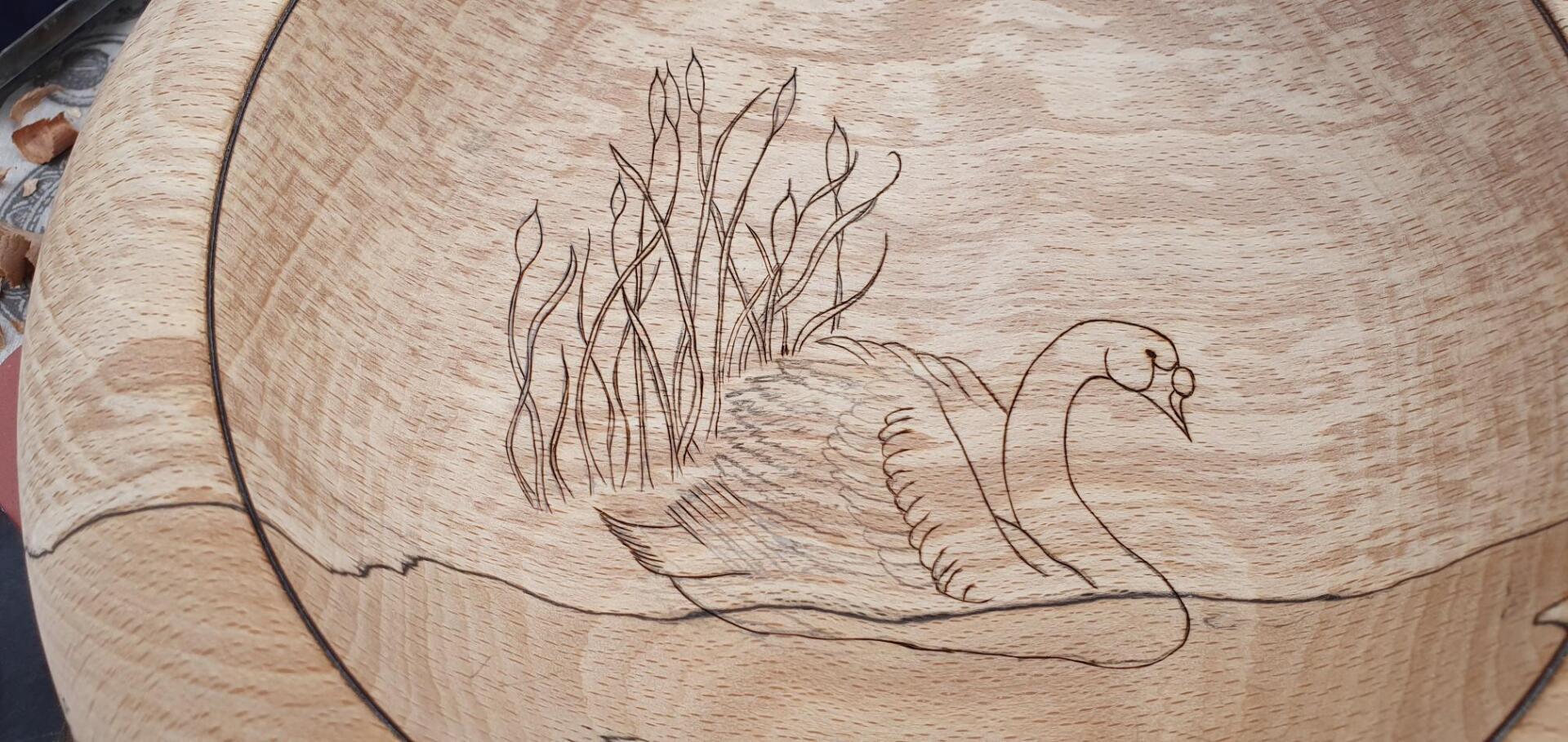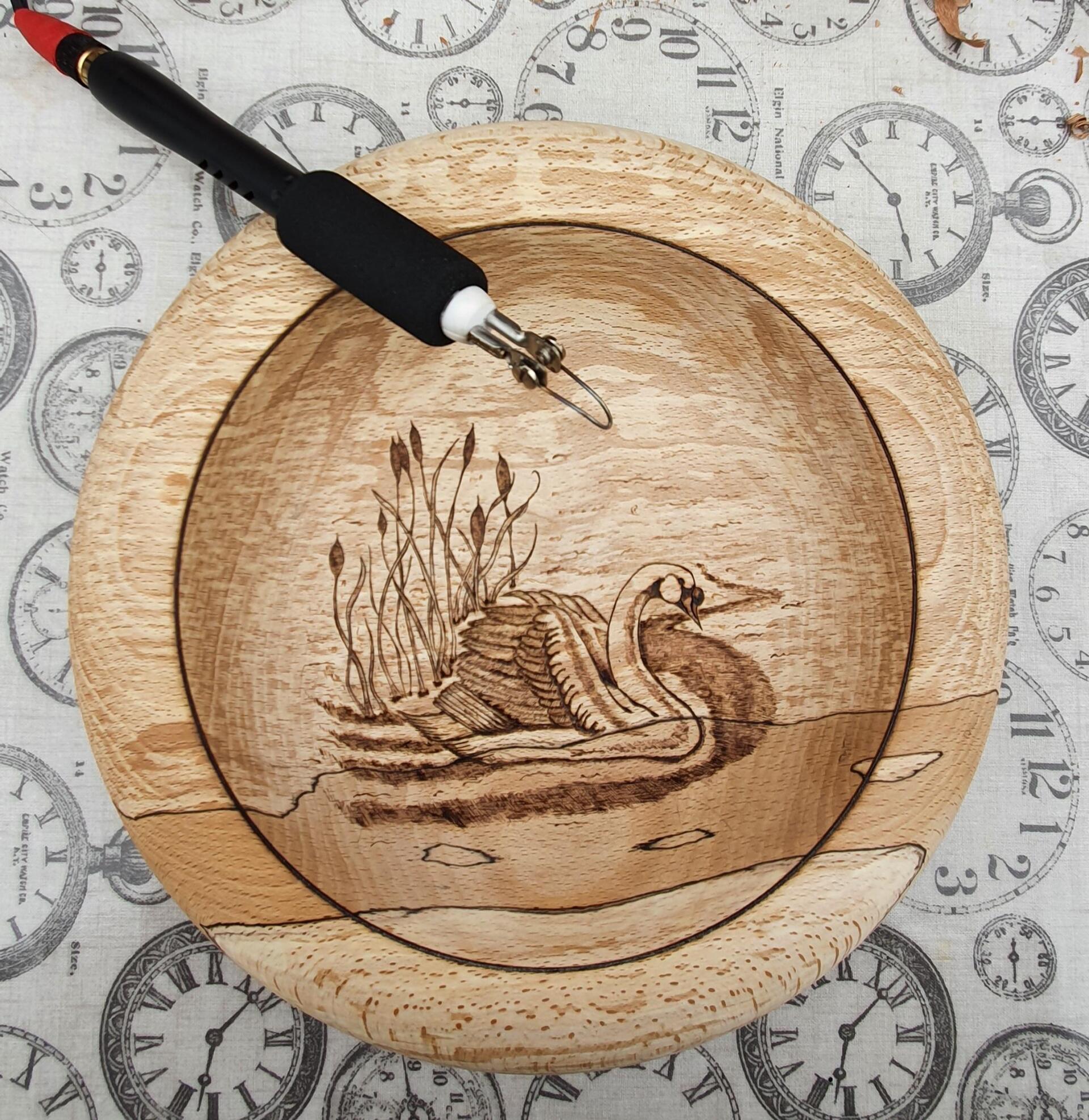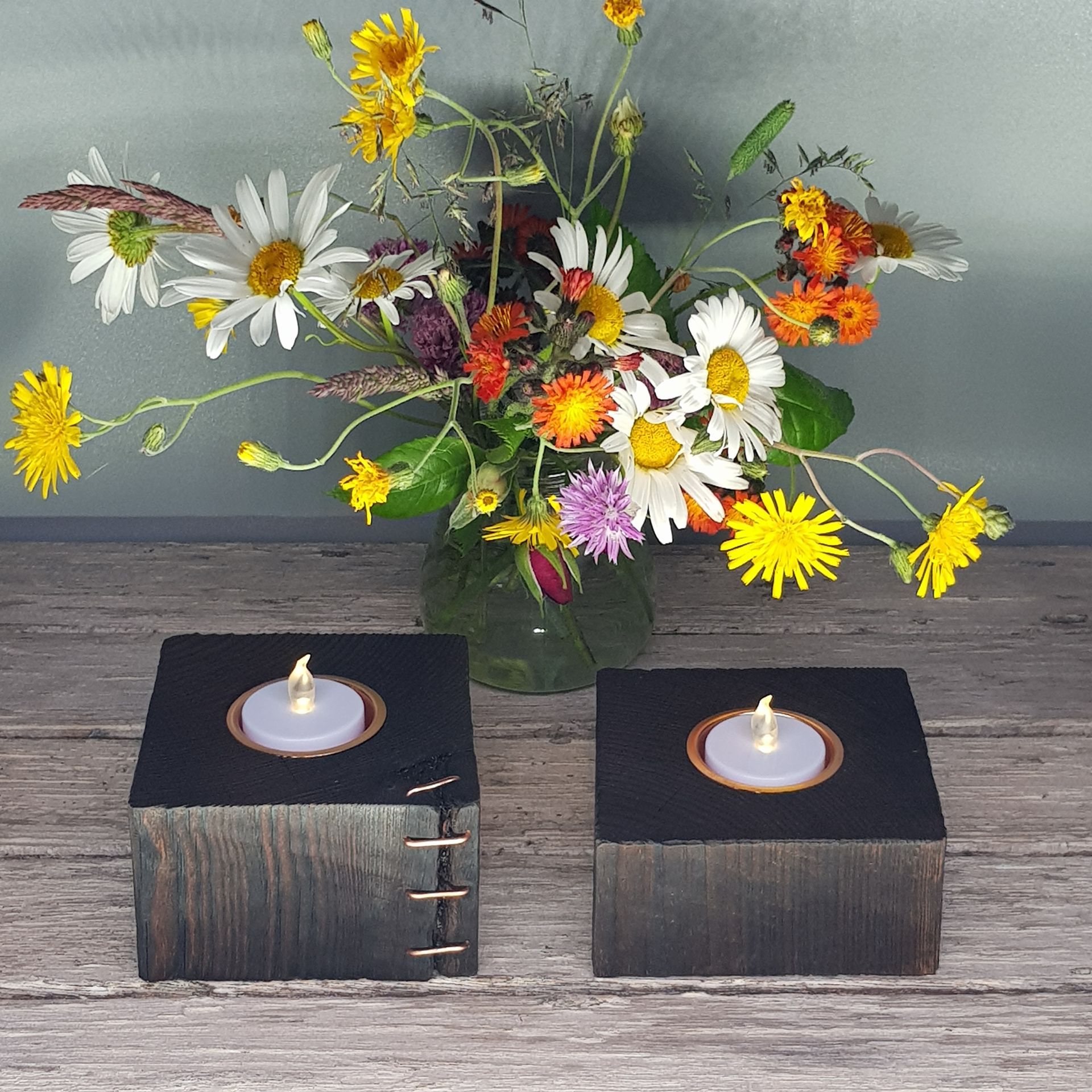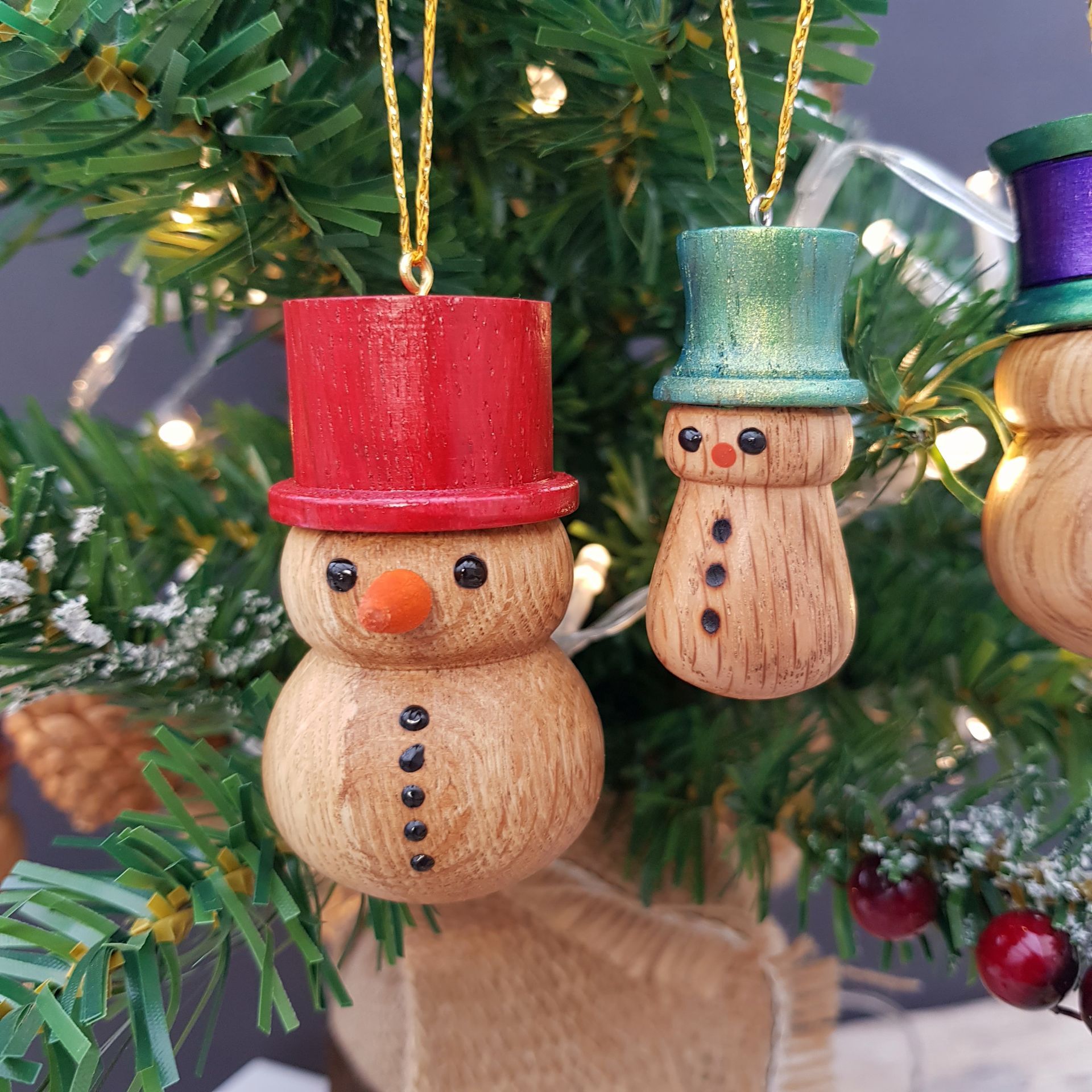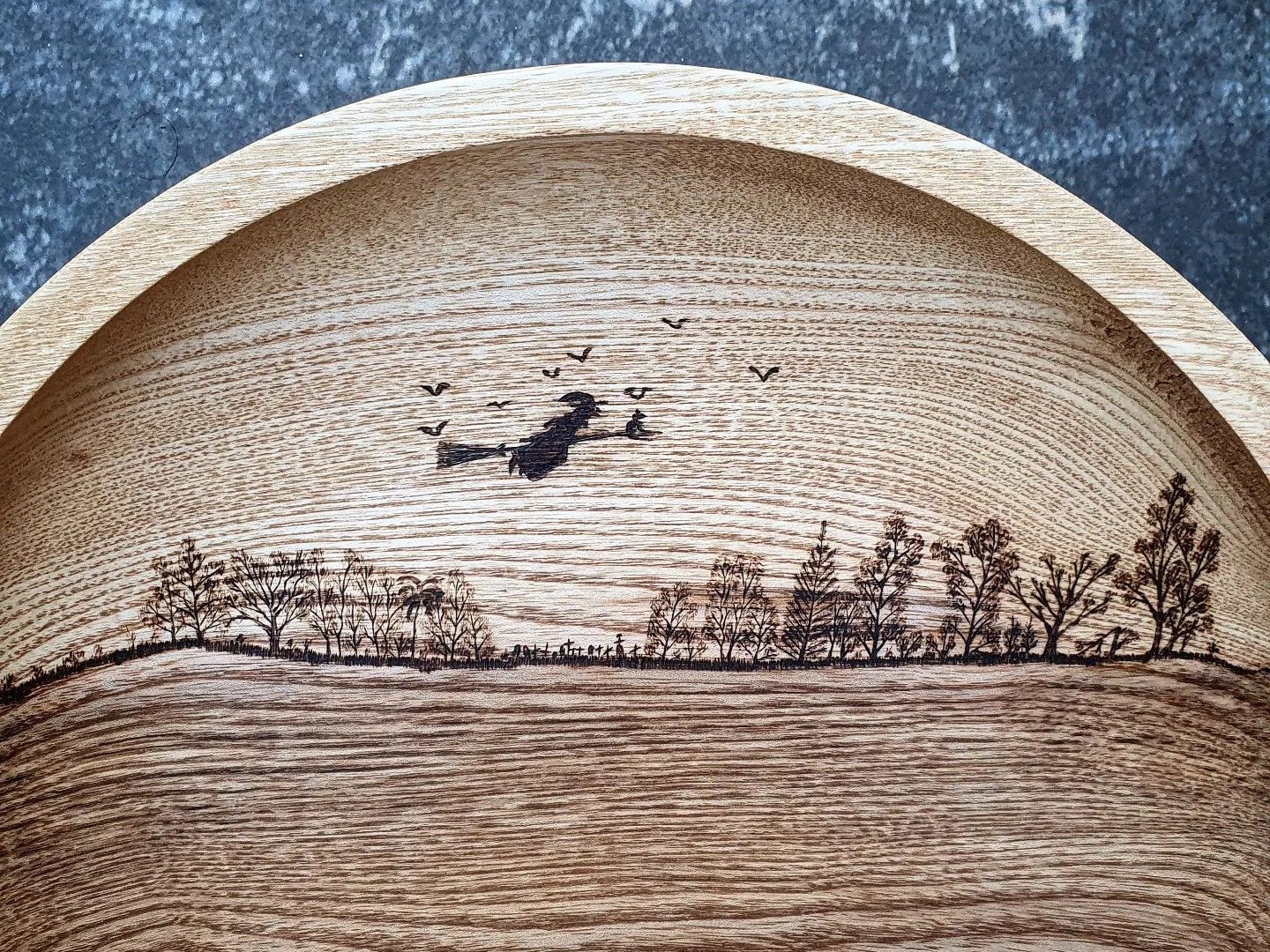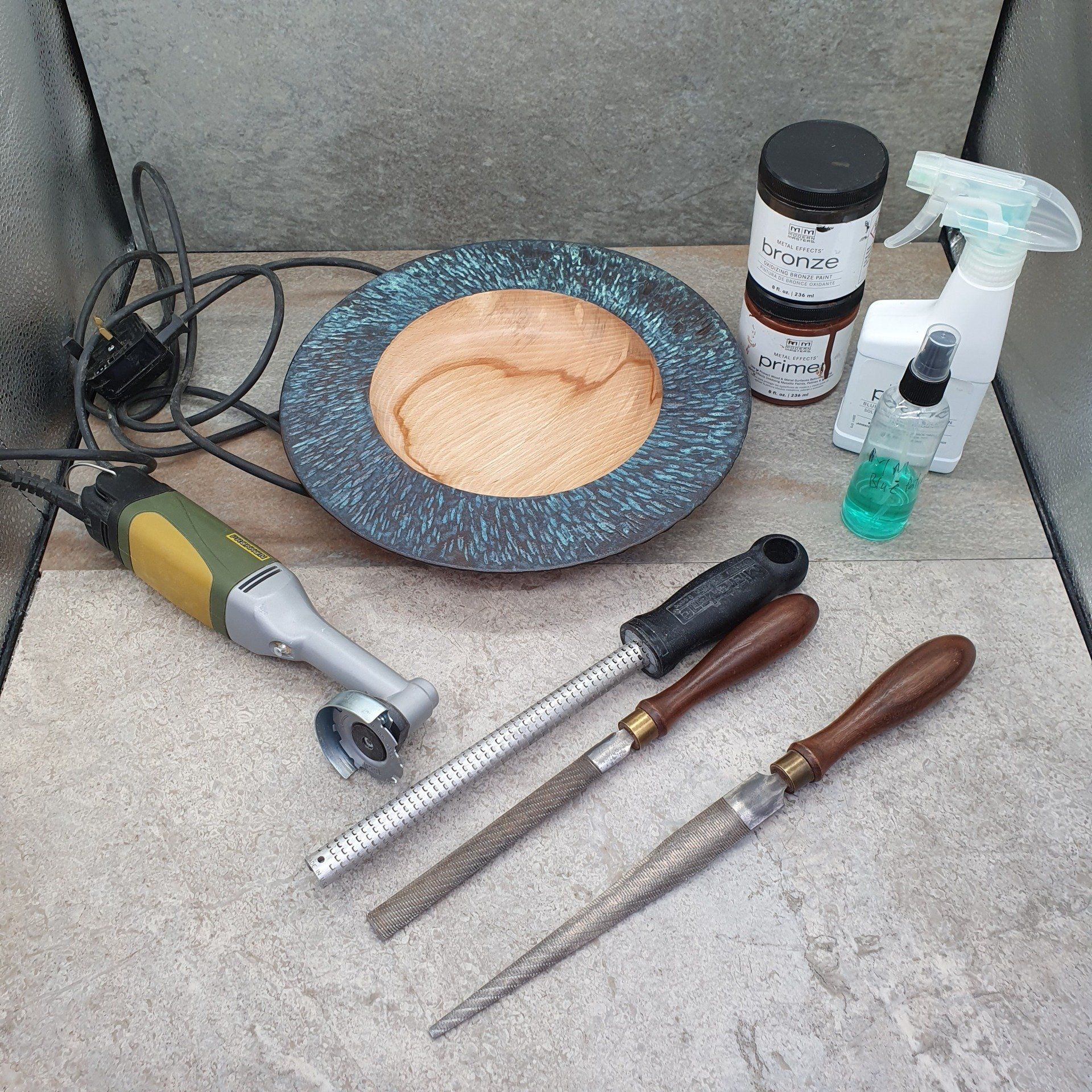Reflecting on my First Pyrography Project
My First Blog Post
Gulp… here goes…
My first blog post.
It features a piece of spalted beech, a hot wire pen and a swan I called Malcolm. Just to warn you, there might be a few made-up words throughout this and uppitycoming blogs.... and although we’ve lived in the Scottish Highlands since 2005, for the eagle-eyed, a bit of my native Yorkshire speak might slip in here too.
By the time I created this piece, I’d been turning for about 14 months.
I’d been steadily finding my way with woodturning - how to correctly present the pointy tools to the spinning wood without a trip to A&E and whether to embellish with colour in the form of dyes and acrylics. Additionally, as I suspect might be the case with other hobbyists, I’d also been haemorrhaging my hard-earned cash on ‘have-to-have’ toolage. One such ‘essential’ was a pyrography unit, because I couldn’t sleep, eat, or think straight until I had one….
Which unit to get though? Hmmm. Choice is a curse sometimes, as is reading reviews as they can muddy the waters rather than provide clarity. Burnmaster? Colwood? Peter Child? Razertip? After turning myself in knots trying to decide, I settled on a Razertip SK with interchangeable tip BHP pen. It’s been excellent, with no regrets.
So, back to Malcolm…
Along with spending a ridiculous amount on ‘essential’ toolage, I’d also been unable to correctifunction without spending even more on ‘essential’ books about woodturning, carving, pyrography, art templates, et cetera, et cetera. It was getting harder to find hiding places for them all, tucking them into the books already on the shelves was drawing suspicious strokey-beard moments from my wife.
One of these books - Deborah Pompano’s ‘Woodburning Project & Pattern Treasury’, Fox Chapel Publishing – provided the inspiration and design for the pyrographic decoration on this beech bowl.
As the grain pattern emerged, I thought the darker band of spalting (looking really hard through squinty peepers) looked a bit pondy…? Enter Malcolm and the water foliage.
The image of ‘Malcolm’ from Deborah Pompano’s book, was photocopied, cut, and placed in the bowl to see whether it needed up- or down-scaling to fit. In this case it was down-scaled, I can’t recall the exact percentage but let’s call it 30% smaller. I must add - this process involves guestimation. All I do then is re-photocopy, setting the photocopier to 70% original size and repeat until you’re happy with what you get..
To transfer the image to the wood, I used carbon paper and traced directly onto the darker grain area in the foreground. Taping the image/carbon paper to the wood with magic tape will stop any movement while tracing. I used a ball-ended, burnishing tool thing to follow the outlines of the image rather than a pen or pencil.
Checking the clarity of the transfer on t’wood, I went over any indistinct areas in pencil. A sharp 2B works well, the marks are more easily rubbed away than with an HB for example and are less likely to leave indents in the wood.
Below, the image has been transferred, hopefully you can see which bits have been pyro’d (darker lines) and the bits still to do (greyer area around the wing).
Below again, further along in the process, loop pyro tip shown.
Different woods burn at different temperature settings so I either test on the centre of the wood blank before the bowl is tooled, or if you forget, like I usually do, set the machine to low power and gradually increase until the desired burn level is reached. Plus, if you make a mistake on a low setting its easier to remove it.
I used a loop tip, a medium knife tip and a medium spoon shader. The loop tip is not one I use much anymore, preferring the knife tip as this cuts a crisp line in the wood, whereas I found the loop tip had a tendency, at least in my hands to skate around a bit. The spoon shader kinda glides over the wood and from what I’ve read (and did here) try to shade lightly first and build up to darker shades by going over the light areas until you’re happy with the appearance. Take care with wood choice for any pyro project.
Spalted wood like this can be quite soft in areas and there is a risk that the pen tips can sink into and melt the spalted areas, making a blobby mess. Open-grained woods like oak and ash can also be a bit tricky, the tip risks being deflected as it passes from softer to harder grain. It’s easier to get a consistent, burn on tighter grained woods.
The colours used are Chestnut Spirit Stains, applied with brushes, the whole piece being protected with 6 coats of Chestnut Satin Lacquer, gently sanding between coats with 600 grit sandpaper. Finally, it was buffed with t’Yorkshire Grit Original then Microfine to give it shine. I’ve had to learn patience where applying finish is concerned, giving time for oil, etc to cure. It does pay dividends.
There is a real skill to pyrography, and I’ve lots to learn - shading to add depth, knowing which tip best suits which situation, mistake correction. I’m happy with the result as this was a first go, but I can see areas where I’d like to do better. I think the swan/water interface could be better, and if I did it again, I’d try to make it look more like Malcom is ‘in’ the water than superimposed ‘on’ it. Practice is the key and if errors are made, think about why, and how to avoid making the same error again.
Aware of the possible conflict/copyright infringement regarding the swan image, we contacted Deborah Pompano to clarify our position. She was kind enough to grant permission for me to use this image on the bowl and for its onward sale. I would like to thank Deborah for her kind permission and words of encouragement.
‘Your bowl is truly a work of art, and I am honored that you have used my swan design, which looks lovely. The colors you used really enhance the design and the bowl.’ Deborah Pompano
That’s it. Bye for now!

